Archibald Knox For Liberty’S Pair Of Art Nouveau Glazed Pedestal Urns
Stock No
35943
2019
- £4,745.00
- €5,655 Euro
- $6,146 US Dollar
Questions about this item?
Like this item?
Item Description
A pair of late 19th century Art Nouveau glazed pedestal urns after a design for Liberty’s London by celebrated designer Archibald Knox, attributed to the Compton Pottery (unsigned).
Made from beautifully glazed buff toned stoneware, these antique planters are unusual in design. The bowls to the top are circular in shape and decorated with Celtic knot motifs, above fluted columns on square bases.
Standing at just over 80 cm tall, these Celtic style jardinieres will make an elegant feature of gardens and interiors modern and traditional alike. Style alone as decorative urns or plant the bowls with flowers for a flourish of colour.
ARCHIBALD KNOX
Archibald Knox (1864-1933) was a pioneer of modern 20th century design. He was Liberty’s primary designer at the height of their success during the early 20th century, his balance of Arts and Crafts, Modernism, Celtic Revival and Art Nouveau style influencing both British and international design.
When employed by Liberty’s in 1899, Knox was tasked with designing the department store’s Celtic style silver and pewter ranges, before moving onto terracotta garden ornaments as well as patterns for carpet, wallpaper and fabric.
ADDITIONAL DIMENSIONS
Dimensions stated are for each.
Bowl ø 35 cm (13.77 in)
Base: 28 cm square (11.02 in)
CONDITION REPORT
Good structural condition. Each is one complete piece. No repairs or breaks. Numerous small firing flaws, scuffs and scrapes as expected.
Item Info
Seller
Seller Location
Herefordshire, Worcestershire
Item Dimensions
H: 82.5cm W: 35cm D: 35cm
Period
Circa 1890
Item Location
United Kingdom
Seller Location
Herefordshire, Worcestershire
Item Location
United Kingdom
Seller Contact No
+44 (0)1981 541155
+44 (0)778 6916288
More from UK HERITAGE
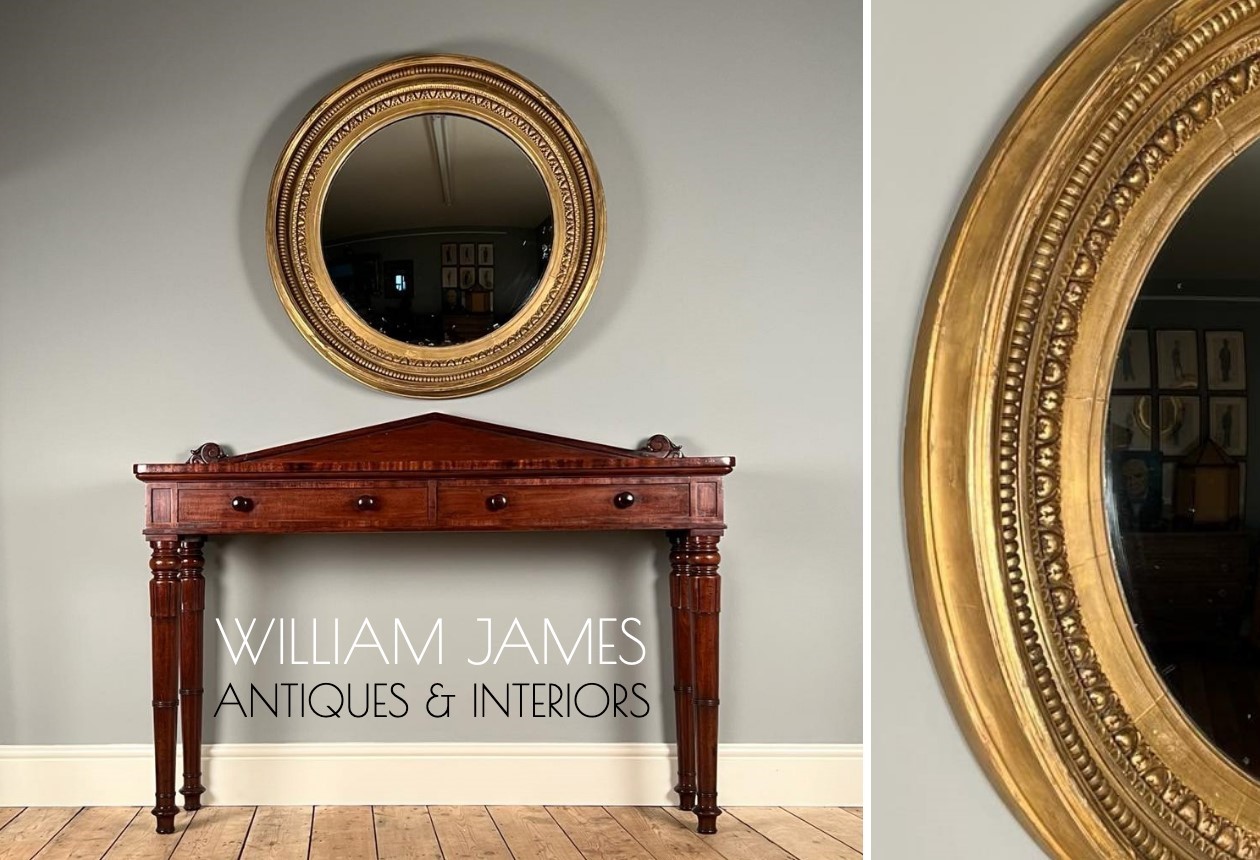



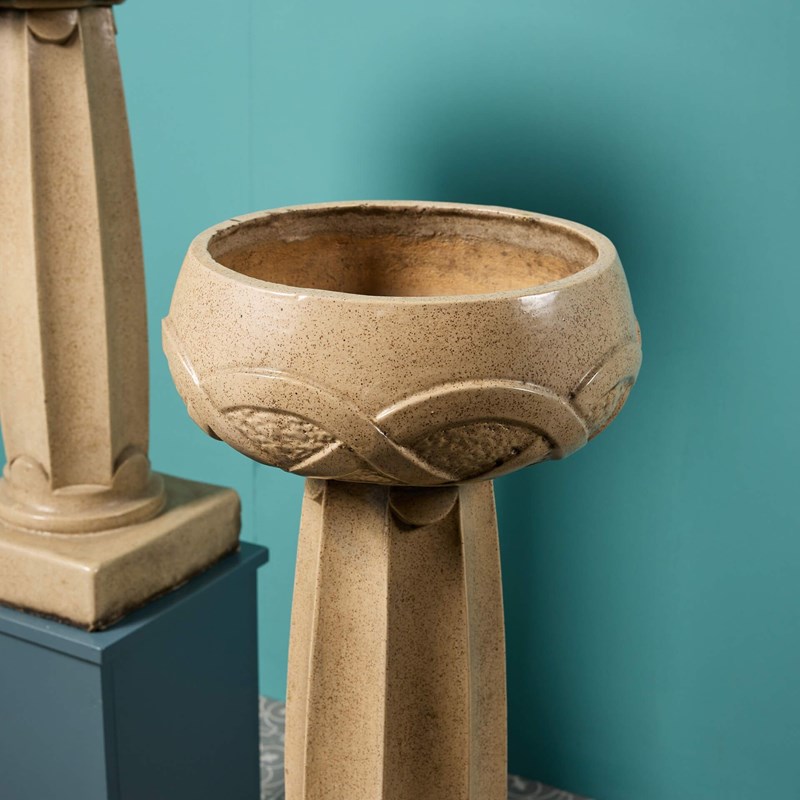
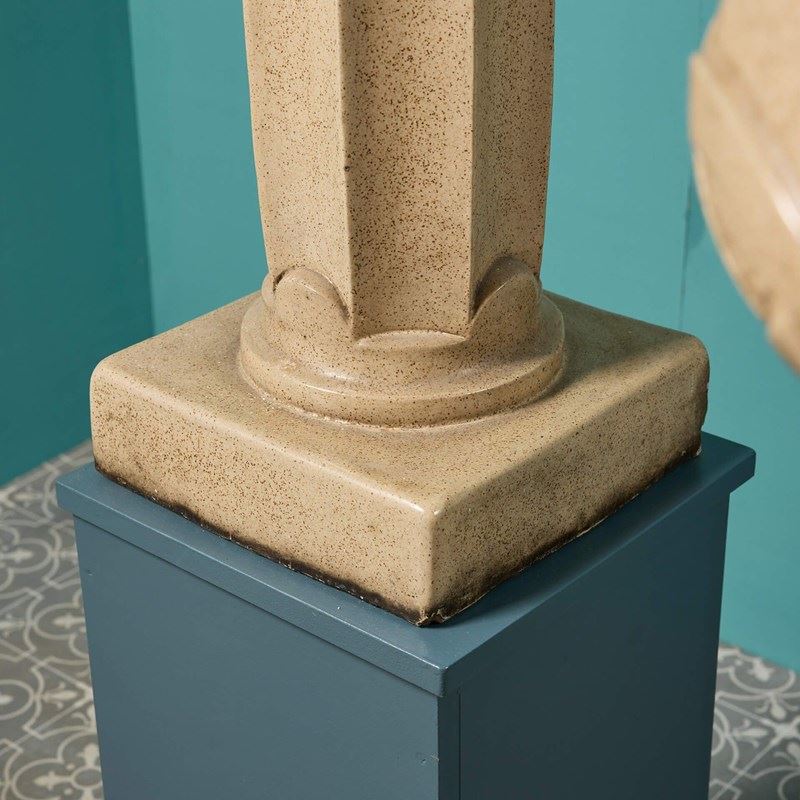
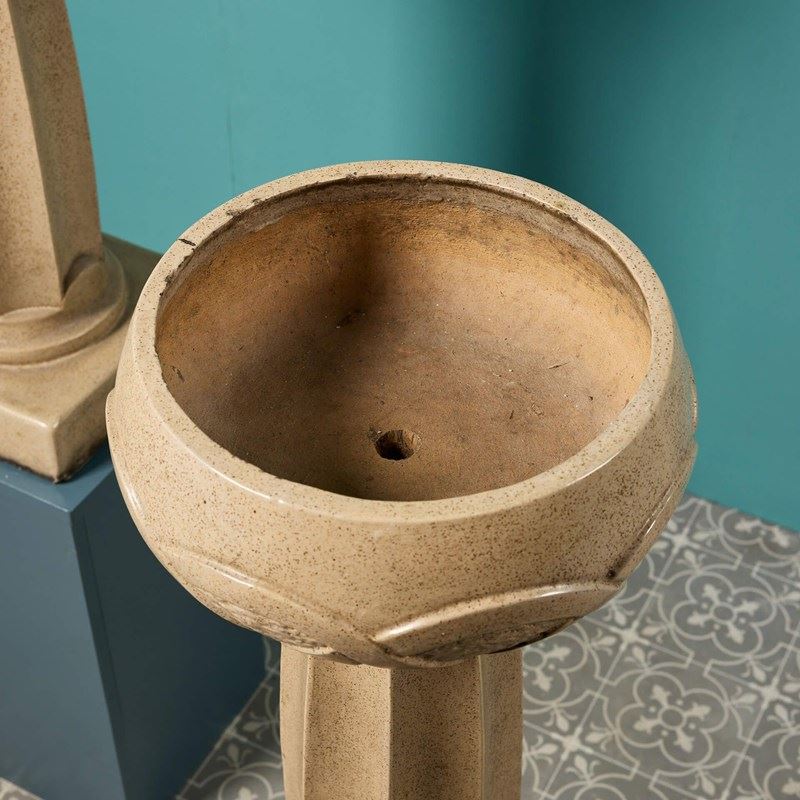
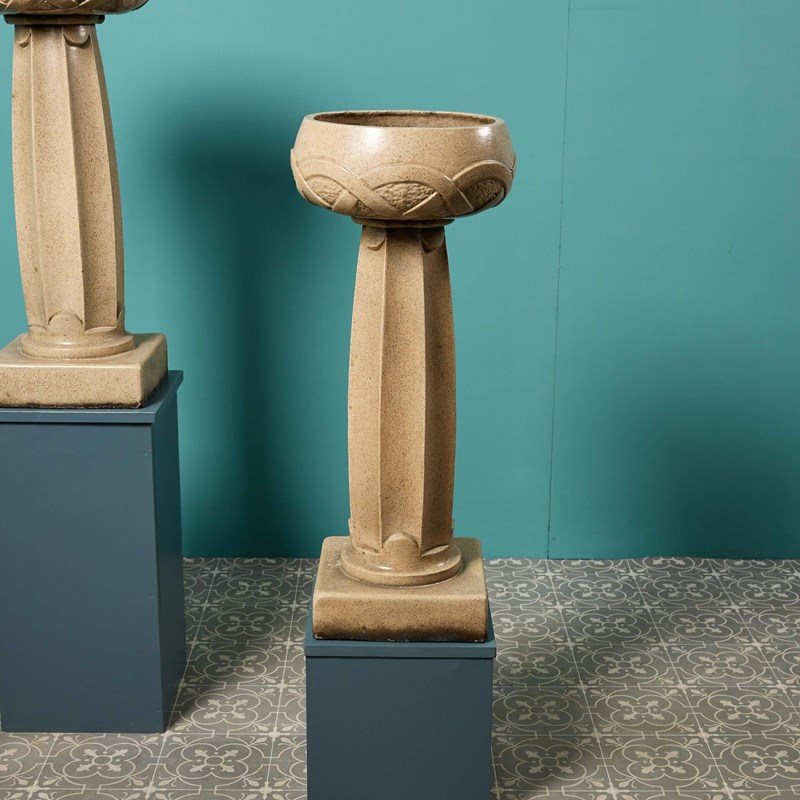
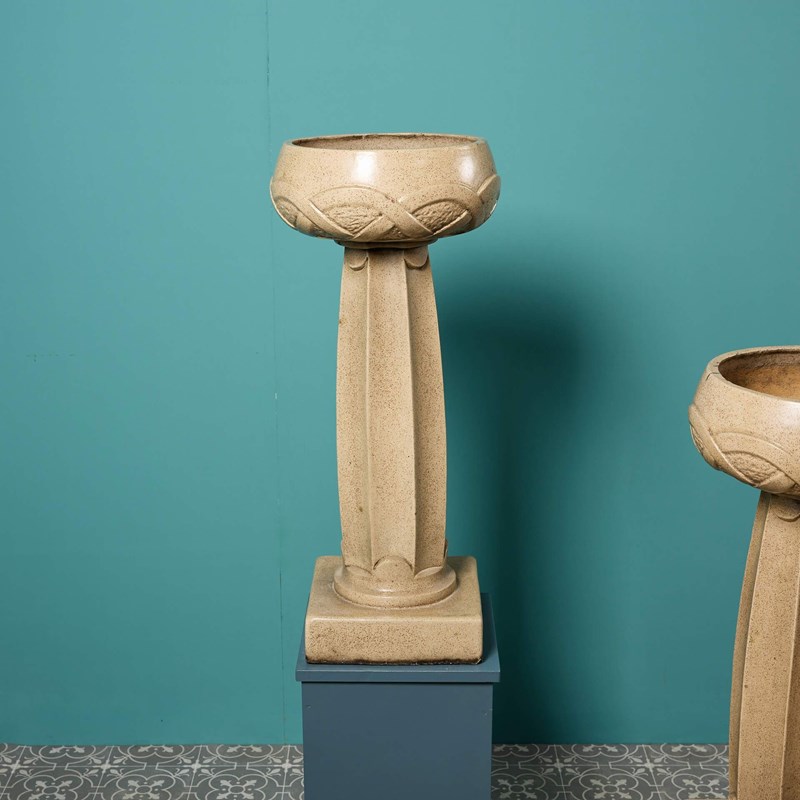
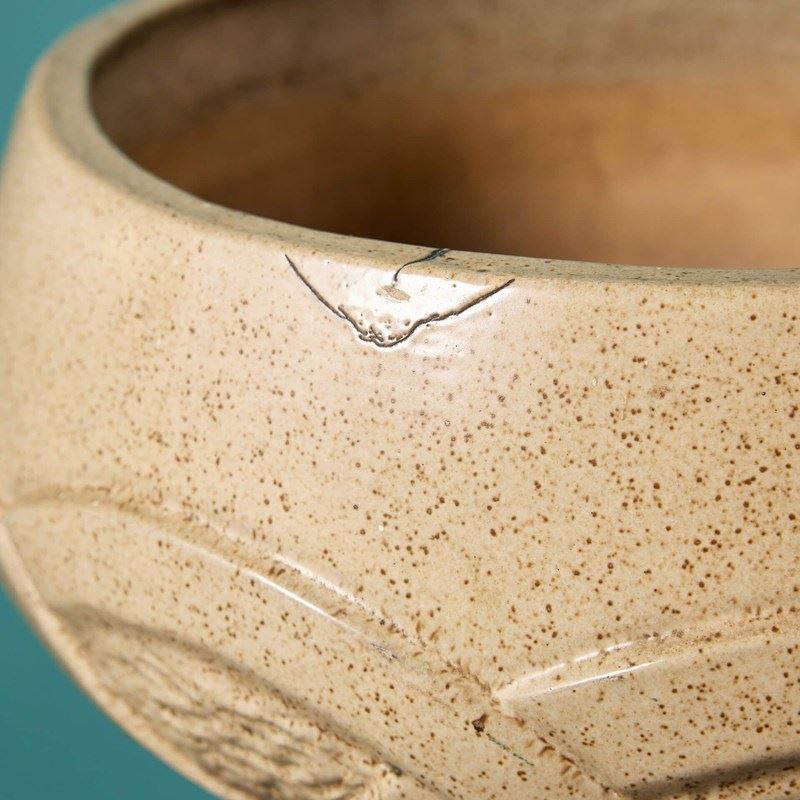
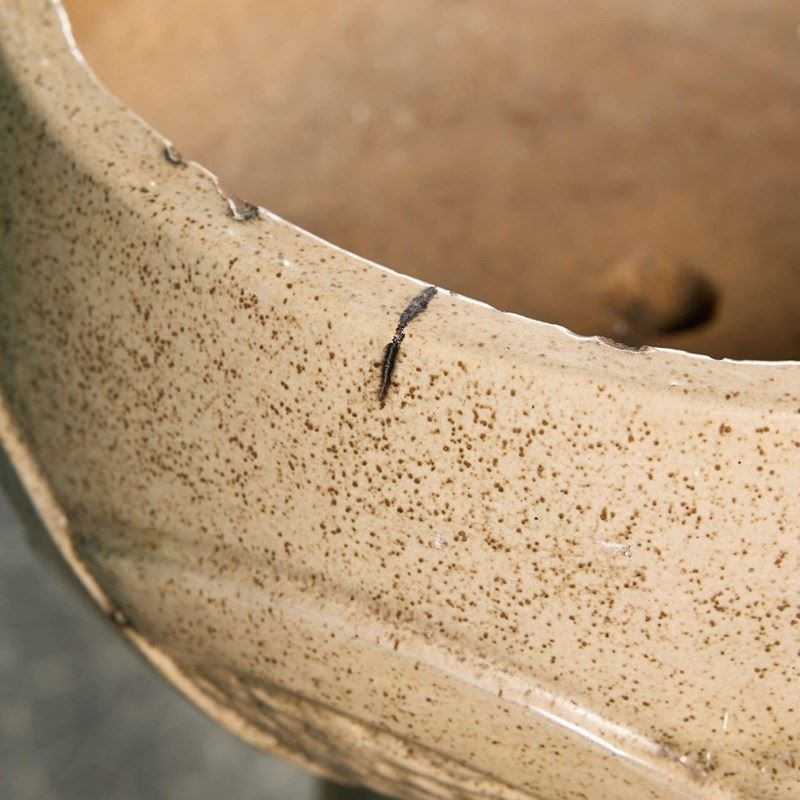
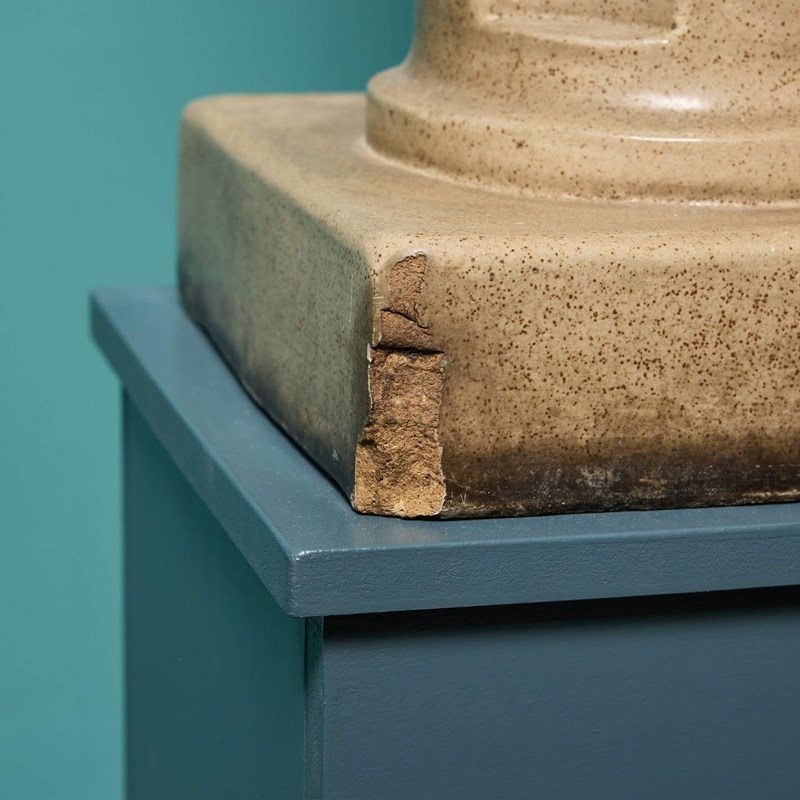

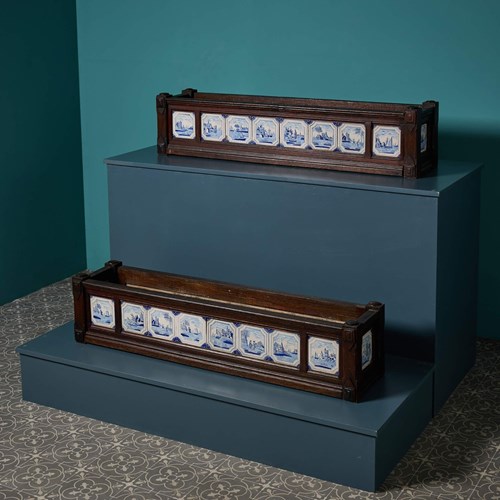
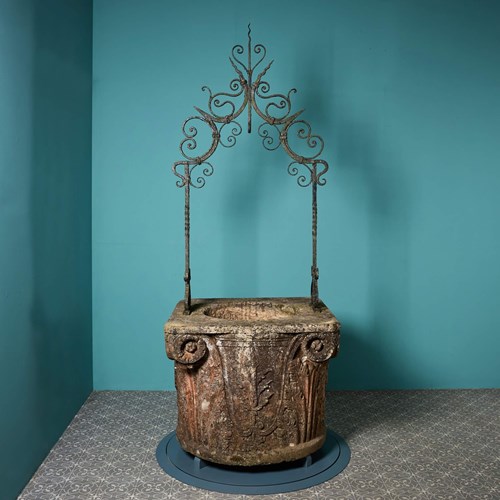
.png)
